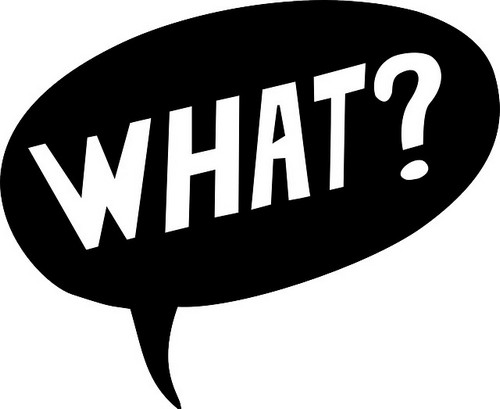When I was a computer programmer, a co-worker and I were taking the bus to our respective homes after work. It was rush hour and the bus was full, so we were standing. We started taking about the project we were working on. After a few minutes a man sitting in the seat next to us asked us if we could repeat anything we had just said in English. My co-worker looked at each other, looked at the man, and both said, “No.”
Every culture, every profession, every hobby… every aspect of life that involves more than one person doing the same thing has its own jargon.
jargon (noun): special words or expressions that are used by a particular profession or group and are difficult for others to understand.
Jargon can include special acronyms or abbreviations, or words or phrases that have a different meaning than they do in society in general. And writing, of course, has its share of those “special words or expressions”.
Experienced writers can toss those words around in discussions or blog posts because it’s part of our language, but they can be confusing to people who are new to writing. So we’re going to reveal the mystery behind some of these secrets!
Let’s start with some acronyms, because those are sometimes the most confusing since the same acronym can mean different things in different communities. For example, “CBT” means “Computer Based Training” in education, and “Cognitive Behavior Therapy” in psychology.
MS: Manuscript. A novel, short story, poem, essay, or any other form of writing. From Latin manu scriptus “written by hand”. This term originally distinguished hand-written work from documents that were printed, but we use it to refer to anything we’re writing. The plural of MS is MSS.
WIP: Work In Progress. The MS we’re currently working on.
MC: Main Character. The most important person in your WIP. (See how this works?) Note that a story can have more than one MC, but too many might confuse your reader. (This doesn’t seem to bother George R. R. Martin.)
POV: Point Of View. The narrator’s position in relation to a story being told. This is a complicated topic, and beyond the scope of this article. Do a search for it and you’ll find dozens of pages about it.
Generally when we talk about POV in writing we’re referring to who the narrator is and how much they know about what’s going on. So you’ll see terms like “First Person” and “Third Person Omniscient”. But there are other aspects to POV, such as experience. A child, a teenager, and an adult will have different perspectives on an event. A police officer and a medical examiner will see a crime seen differently.
YA, MG, NA: Young Adult, Middle Grade, New Adult. These are age-targeted reader markets: MG is about 9–12, YA is 13–17, and NA is 17–25. There are different considerations for each of these audiences, including writing level, story length, and age and experience of the characters (see age-related POV above). Here’s an article about writing for age-based markets:
Understanding YA, NA and MG – A Writers Bible
PB, GN: These are special types of publications—Picture Books and Graphic Novels.
KDP: Kindle Direct Publishing. Amazon’s publishing platform. If you’re going to self-publish, you need to understand KDP. Again, this is beyond the scope of this article.
D2D: Draft2Digital. This is another service for independent (self-published) authors that will format your book and push it to a number of e-book shops including Barnes & Noble, iBooks, Kobo, and a list of smaller sellers. The can also push to Amazon, but not to KDP.
There are other services like this (they’re called “aggregators”), like
BookBaby Smashwords, and
Lulu. If you’re self-publishing, research these services. You might not get many sales from a e-book seller in Southeast Asia, but every sale counts, and the total of sales from smaller sellers could be significant. Some of them also offer print-on-demand (as does KDP).
There’s nothing to prevent you from signing up with more than one of these services. If D2D covers most of the book publishers but BookBaby has a few that D2D doesn’t, set up accounts with both of them. Yes, it will make your life more complicated. But if it brings in a couple more sales each month, it might be worth it. Just be sure to research the cost (commissions) of each service to make sure it’s worth your time.
Here are some acronyms for local and national writing associations. Writing groups generally have educational programs, conferences, local chapters, and other resources, and they help you connect with the writing community.
TEAFN: That’s Enough Acronyms For Now. In the next installment we’ll start talking about terms and phrases that you’ll run into in the writing community.
Are there any writing acronyms that you’ve run into that you had to look up? Post them in the comments!


Kurt,
This is a good compilation of acronyms. For our geographic area, you might want to add BWA for Boulder Writers Alliance and DWPC for Denver Women’s Press Club.
Thanks, Laura. I’ve added the groups you suggested.
~~ Kurt
when I was formulating my new email address as a writer, (when I quit my corporate career ), I was delighted to realize my initials MS would be great for a writer because of the double duty as an acronym. So I’m ms@maggiesmithwriter.com and often get people asking about whether that stands for Manuscript.
Thanks for giving us a decoder ring for our writing jargon! You might add PB for picture book and GN for graphic novel. And here’s another organization for anyone who writes PB, MG, YA, or GN: Society for Children’s Book Writers and Illustrators (SCBWI).
Thanks, Kelley, I’ve added your suggestions.
~~ Kurt